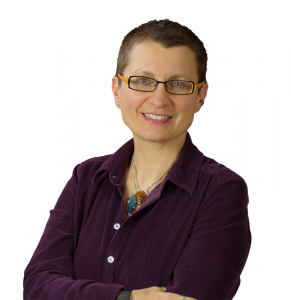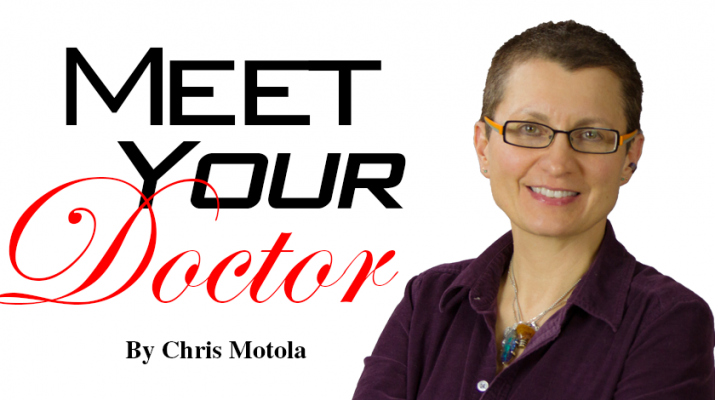Physician discusses how integrative medicine can help patients with cancer, Lyme disease
By Chris Motola
 Q: You have a new practice in Chittenango. What kind of patients do you see?
Q: You have a new practice in Chittenango. What kind of patients do you see?
A: I have been board-certified in internal medicine, hematology and oncology, but I have specialty training in integrative medicine. I take care of cancer, Lyme and general medical patients from an integrative standpoint, including patients seeking prevention and wellness. That’s the focus of my practice.
Q: For those unfamiliar, what is “integrative medicine?”
A: Integrative medicine is bridging conventional therapy with more holistic and complementary therapy to help improve patients’ quality of life. We’ll use herbal supplements, either oral or IV or other modalities like mind/body therapy to help improve outcomes.
Q: What benefits have you seen from adding holistic elements to your patients’ treatments?
A: An integrative approach is helpful in reducing side effects from conventional therapies, because many times drugs do have side effects. We try to alleviate symptoms to help patients improve outcome and the quality of their lives with mind-body therapies and IV or oral herbal supplements. In many cases, patients can come down on their pharmaceuticals or come off of them completely. A lot of my patients have either cancer or chronic Lyme disease, so we use herbals in conjunction with conventional therapies. I find it helps patients tolerate conventional therapies better. I hope that it can also eventually help improve survival, and we know from the integrative literature that it can. There is definitely a positive effect on quality of life.
Q: Are there any particular alternative therapies that patients seem to respond to the best, or does it vary by patient?
A: It varies by patient. I try to tailor supplements by looking at which ones have an evidence-basis for particular problems. For Lyme disease, there are certain herbal blends that seem to help. For cancer, there are various supplements that can decrease inflammation, decrease pain or even help, along with chemotherapy or radiation, to control the growth of cancer.
Q: How do you manage your patients’ expectations for what alternative therapies can and can’t do?
A: I think every patient’s case is unique, and they come to me for a variety of reasons. I always ask my patients what their goals are, and give them realistic expectations about what integrative medicine can do. The great thing about integrative medicine is that it’s a partnership between the provider and the patient. Many times in conventional medicine patients are just given a prescription and feel like there is very little they can do themselves. In my practice I will encourage patients and explain the power they do have to affect their own health while I help them figure out what is appropriate. We do have the ability to certify medical marijuana for patients if it’s appropriate. We can recommend a variety of herbals and IV “nutraceuticals” like high-dose vitamin C. We also have a Reiki practitioner in the office, and focus on mind-body healing. We also have a board-certified integrative nutrition holistic health coach in the office. I develop a unique treatment plan with each patient and encourage them to embrace their own well-being. I try to undo any obstacles that interfere with a patient’s own ability to heal. Integrative medicine is very empowering for patients. I always let patients know that healing is always possible even if curing is unlikely.
Q: Immunotherapy seems to be an emerging way of treating cancer. Do you see it as conventional medicine and alternative medicine aligning somewhat?
A: I think they definitely can work together, and we have a lot of data in the integrative world that the use of antioxidants can support rather than impede conventional therapies. There are particular herbals that can interfere with particular drugs, but with most herbals this is not an issue. The trouble is that it’s hard to get studies funded on herbals. We do need more information on whether herbals can support these new immunotherapies or if they will be problematic. So we want to be very careful about what we recommend to go along with these newer drugs.
Q: What makes Lyme disease such a complicated disease to treat?
A: It’s complicated by its nature when it becomes chronic. In its acute stage, shortly after a tick bite — when you may or may not have a bullseye rash — is when it’s curable if treated appropriately. Unfortunately, many times patients don’t remember a tick bite or they’ve been treated only partially, or initial treatment was not effective. Then, they end up getting what we ILADS-trained physicians [International Lyme and Associated Diseases Society] call chronic Lyme disease or what the IDSA [Infectious Diseases Society of America] physicians call post-Lyme syndrome. There’s disagreement over what’s actually going on and whether it’s a real disease. What we’ve found, and what I believe, is that it’s an epidemic and a real problem. We ILADS doctors feel that the spirochete that causes Lyme changes shape and does persist within the body, causing a multitude of complex clinical problems. Chronic Lyme disease patients often also acquire other infections called co-infectors which can cause added symptoms. These can include everything from joint and muscular pain to central nervous system problems, heart issues, gut issues, as well as compromising the immune system and others. There are a lot of politics in terms of managing Lyme because of this disagreement in the medical community, and the fear of using longer term antibiotics. In my personal experience and practice, many patients get better with appropriate treatments with longer term treatment with herbals, antibiotics or a combination of the two, meaning from two months up to a year or more.
Q: Obviously the bullseye rash is a good indicator if Lyme disease is present, but how effective is our detection of the disease otherwise?
A: The problem with the testing that we have is that it takes three to six weeks for an antibody response to mount. And even then the standard Lyme test we have is not highly accurate. We tend to have a lot of false negatives. On the standard test there is even a disclaimer that we need to treat patients on a clinical basis rather than rely on the test; the test is designed for research purposes, not for clinical management of patients. So we need to look at the patient’s symptoms. We have patients who have only been treated with two antibiotic tablets for acute Lyme, which is very inappropriate. So we need better testing, but we also need to educate providers about the dangers of developing chronic Lyme disease when acute Lyme is not treated appropriately.
Q: For the physicians who don’t believe chronic Lyme is a thing, what do they think is going on with these patients?
A: Many of them refer to it as post-Lyme syndrome (or these patients are misdiagnosed as having a different illness). The idea is that the organism is no longer present, but it has caused collateral damage. So they think the symptoms are caused by some kind of permanent damage the organism has done and we can’t really do much about it. It is more complicated than that. There are co-infectors that travel with Lyme disease in the tick bite, and they can cause related or different symptoms that need to be dealt with as well. We ILADS-trained doctors feel that most or all of these organisms are persistent long-term. We may not be able to completely eliminate these organisms from the system, but we can help patients go into remission and feel better. I have had many patients who were at a very low-functioning level and have gotten them back to normal or near normal functioning. The key is to maintain these patients in remission long-term.
Lifelines
Name: Heidi S. Puc, MD, Fellow of the American College of Physicians (FACP), member of American Board of Integrative Holistic Medicine (ABIHM)
Position: Physician/Owner, Integrative Medicine of Central New York, P.C. in Chittenango
Hometown: Grew up in Ridgewood, Queens, but has made Syracuse her hometown for the last 23 years
Education: Mount Sinai School of Medicine, The New York Hospital/Cornell Affiliated Hospitals, Memorial Sloan Kettering Cancer Center. Received specialty training in Integrative Medicine through the Scripps Clinic in California, and also completed a two-year fellowship program run by Dr. Andrew Weil at the University of Arizona.
Career: Former physician owner at Hematology Oncology Associates of Central New York. Worked as a physician employee at the Stram Center for Integrative Medicine
Organizations: Fellow of the American College of Physicians and a diplomate of the American Board of Integrative Holistic Medicine. Also a member of the American Society of Clinical Oncology, the American College of Physicians, the Society for Integrative Oncology, and ILADS
Family: Fiancé, three children
Hobbies: Exercise, hiking, camping, meditation

